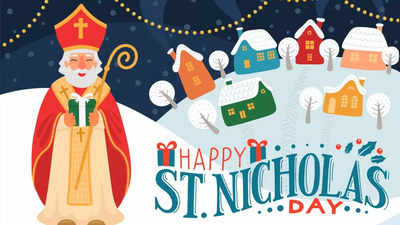Trending
St Nicholas Day 2024: Date, history and significance of the day
St. Nicholas Day, celebrated on December 6, honors the 4th-century bishop known for his generosity. Rooted in European tradition, children receive treats, while the naughty may get playful punishments. The day's history links to gift-giving, evolving into the modern Santa Claus figure. Distinct celebrations continue worldwide, from European parades to US Christmas markets.

Who was St Nicholas? Know the history of the day
Significance of the day
The feast day commemorates the death of St. Nicholas on December 6, 343 A.D. A centuries-old festival, it is especially celebrated with much enthusiasm in Germany, Belgium, the Netherlands, and other parts of Europe. Many people start the celebrations on the evening of December 5, known as St. Nicholas Eve.

Are St Nicholas and Santa Claus the same?
The modern-day Santa Claus may have evolved from St. Nicholas. In the Netherlands, St Nicholas started to known as Sinterklaas. Dutch settlers carried the tradition to the American colonies, where it evolved into Santa Claus. His image merged with Nordic and European folklore, transforming into the jolly, gift-giving character we associate with Christmas today.
Despite this evolution, St. Nicholas Day remains distinct in many countries. In Belgium and the Netherlands, Sinterklaasfest on December 6 is a major holiday, complete with parades and gift exchanges. In parts of Germany and France, figures like Knecht Ruprecht and Père Fouettard accompany St. Nicholas, rewarding well-behaved children and chastising the naughty.
In Germany and Austria, some villages still embrace the folklore of Krampus, a devilish companion of St. Nicholas who scares misbehaving children. Meanwhile, in the US, German and Dutch communities keep the traditions alive. Cities like Milwaukee, Cincinnati, and Pittsburgh host festivities ranging from Christmas markets to storytelling bonfires. In Pennsylvania’s Mifflinburg, a three-day German-style Christmas market honors the holiday with festive food, gifts, and decorations.
Miley Cyrus twerks on Santa, swigs liquor in naughty Christmas outfit!
End of Article
FOLLOW US ON SOCIAL MEDIA
Visual Stories
Tired of too many ads?go ad free now










